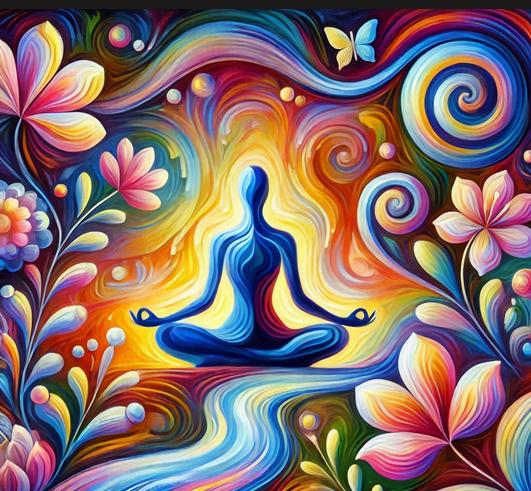The Art of Presence: How to Live Fully in the Moment
In the vast and rich tapestry of mystical traditions, one concept that stands out as both profound and universally applicable is presence. Whether one looks to the teachings of ancient sages, Eastern philosophy, or the practices of contemporary mystics, the call to be fully present in the moment echoes through time. Mysticism teaches that the true nature of reality, the divine, and even the self, can only be experienced in the present moment. Everything else—the past and future, desires and regrets, expectations and fears—are distractions from the eternal now.
As a practitioner of mysticism, I have come to understand that cultivating presence is not just a meditative practice but a way of life. Presence, or being fully attuned to the here and now, is an art that can transform our spiritual path, relationships, and overall experience of the world. In this guide, we will explore what it means to live in the present moment, why it is central to mystical traditions, and how we can practically cultivate presence in our daily lives.
1. The Essence of Presence in Mysticism
At the heart of mystical teachings is the idea that the present moment is the gateway to spiritual awakening. Mystical traditions, whether Western or Eastern, emphasize that reality is not a static thing, but a living, unfolding process that can only be fully apprehended in the now. The present is the only time in which we can experience life directly. Everything else—the past and future—exists only in our minds, as memories and projections.
Consider the words of the great mystic Eckhart Tolle, who speaks of the power of now in his renowned book The Power of Now. He writes, “Realize deeply that the present moment is all you ever have. Make the NOW the primary focus of your life.” In essence, being fully present means stepping outside the mind’s tendency to cling to the past or reach for the future, and instead, surrendering to the immediacy of the current moment.
In many Eastern traditions such as Zen Buddhism, Taoism, and Advaita Vedanta, presence is the key to recognizing our true nature, which is pure awareness. In these traditions, the mind’s constant activity—its chatter about what was or what might be—obscures our innate connection to the divine. By cultivating presence, we remove the veil of distraction and are able to experience the unity of all things, right here, right now.
2. The Mind and Its Distractions
Why, then, is it so difficult to remain present? The answer lies in the nature of the mind itself. Our minds are constantly moving, analyzing, judging, planning, and reflecting. We live in a world that constantly pulls us in multiple directions, bombarding us with stimuli, expectations, and obligations. We have been conditioned to focus on the future (planning, achieving, aspiring) and the past (memory, regret, nostalgia), both of which are distractions from the present moment.
The mind, as it races from thought to thought, creates a sense of separation from the world and from others. It traps us in a narrative of “me” and “my story,” preventing us from experiencing life directly as it unfolds. This is why presence is so central to mystical practice—it requires that we step out of the mental narrative and into the direct experience of life.
To be present, we must learn to observe the mind without becoming identified with it. As the mystic Ramana Maharshi taught, we must ask ourselves, “Who am I?” and go beyond the thoughts, memories, and concepts that arise in our minds. This inquiry can be a powerful practice for grounding ourselves in the present moment, for when we stop identifying with the thoughts and emotions that come and go, we come closer to the truth of our being, which is awareness itself.
3. Cultivating Presence: Practical Approaches
While presence is an abstract concept, there are many practical ways to bring ourselves into alignment with the now. As a practitioner, I have found several approaches to be particularly effective in cultivating presence in daily life. These practices are grounded in mindfulness, self-awareness, and the art of slowing down.
3.1 Mindful Breathing: The Anchor to the Present Moment
One of the simplest and most effective ways to anchor ourselves in the present is through mindful breathing. Our breath is a natural rhythm, always available, and deeply connected to the body. In moments of distraction or overwhelm, the breath can be a powerful tool for re-centering ourselves.
Begin by taking several deep breaths, inhaling through your nose and exhaling through your mouth. Feel the rise and fall of your abdomen with each breath. With each inhalation, bring your awareness to the sensations in your body. With each exhalation, let go of tension and mental clutter.
As you breathe, notice how your thoughts begin to slow down. When your mind starts to wander, gently bring your focus back to the breath. This practice is not about forcing the mind to be still, but about simply observing it and choosing to return to the present moment. Over time, mindful breathing becomes a subtle yet powerful tool to remain grounded in the now.
3.2 The Practice of Sensory Awareness
Our senses provide a direct gateway into the present moment. By focusing on the sensory details of our surroundings, we engage with the world in a direct, immediate way. This practice—often referred to as “sensory awareness” in mindfulness traditions—helps us shift from a mental state to a more embodied experience of life.
The next time you find yourself distracted or lost in thought, pause for a moment and take in the details of your environment. What do you see, hear, smell, feel, and taste? Try to engage with each sense one at a time, noticing the textures, sounds, and colors of your surroundings. For example, when walking outside, take time to notice the feel of the wind on your skin, the rustling of the leaves, or the warmth of the sun. When eating, slow down and savor each bite, noticing the flavors, textures, and the act of nourishment.
By actively engaging with our senses, we stop “thinking” about the moment and simply experience it as it is. This practice can be a beautiful way to reconnect with the present and notice the sacredness of the world around us.
3.3 Living with Intention: Being Present in Action
Many mystical traditions speak of the importance of intention in spiritual practice. When we approach our activities with intention, we bring a sense of purpose and mindfulness to everything we do. Instead of moving through tasks mechanically or distractedly, we engage in them with full attention, treating each action as an opportunity to express our highest self.
Whether you are working, interacting with others, or simply washing dishes, try to bring intention to the task at hand. Before you begin any activity, pause for a moment and set an intention: “May I do this with full attention and presence.” When you cook, clean, or converse, do so with the awareness that each action is an expression of your being in the present moment. As you do so, notice how the task transforms from mundane to meaningful.
In mystical terms, this is the practice of “right action”—acting in a way that reflects alignment with the present moment and your true nature. When we act with intention, we cease to act from habit or unconscious patterns and instead, bring our full selves into the moment.
3.4 The Power of Silence: Quieting the Mental Chatter
Another powerful tool for cultivating presence is silence. Silence is often overlooked in a world filled with noise, but it is in silence that we can hear the deeper currents of reality. When we are constantly speaking, thinking, or being bombarded with external noise, it becomes difficult to access the stillness and clarity that is our true nature.
Take time each day to sit in silence. This could be during meditation, during a walk, or even while sitting quietly in your home. Notice how your mind races at first, filled with thoughts and distractions. Instead of engaging with them, simply observe them and let them pass. The more you practice silence, the more you begin to experience a deeper peace within yourself—a peace that is always present, but often drowned out by the noise of daily life.
In silence, you reconnect with the essence of who you are—pure awareness. This practice of being present with the silence allows you to experience life without the filter of thought and narrative, helping you enter into a direct relationship with the present moment.
4. The Challenges of Presence: Staying Grounded in the Now
Living fully in the present moment is not always easy. Our minds are conditioned to wander, and life is full of distractions. The key is not to judge ourselves when we fail to remain present but to approach these moments with patience and self-compassion. Presence is a practice, not a destination.
When you find yourself lost in thought, simply return to your breath or the sensory details of the present moment. Each time you come back to the now, you strengthen the muscle of presence. Remember, the present moment is always here, always waiting for you to return.
5. Conclusion: The Path of Presence
The art of presence is a transformative practice, deeply embedded in the heart of mysticism. When we cultivate the ability to live fully in the moment, we open ourselves to a deeper experience of life—one that is rich with beauty, connection, and spiritual insight. By integrating simple practices like mindful breathing, sensory awareness, intentional action, and silence into our daily lives, we begin to embody the essence of mystical living.
Ultimately, presence allows us to experience the world as it truly is—not as a mental construct, but as a direct, immediate expression of the divine. When we live fully in the moment, we align ourselves with the flow of life itself, and in that alignment, we find the profound peace and joy that is always available to us.





